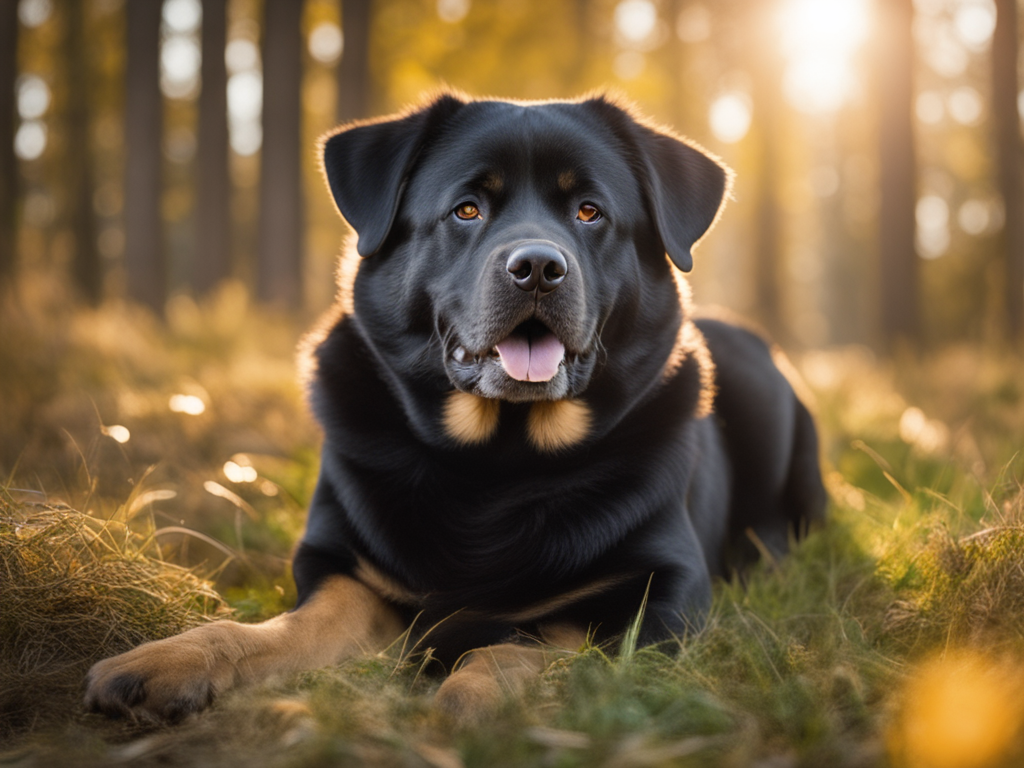How Do I Know If My Pet Is Overweight

How Do I Know If My Pet Is Overweight: Ever wondered if your pet is carrying a few extra pounds? It’s a common concern among pet owners, and rightfully so. But how do you really know if your furry friend is overweight? There’s a theory that suggests certain physical signs can help you determine your weight status. However, it’s important to delve deeper into this topic to fully understand the truth behind it.
By exploring the physical signs of pet obesity, using body condition scoring, and understanding the health risks associated with excess weight, you’ll be able to make an informed assessment. So, let’s dive into this discussion and uncover the clues that can help you determine if your pet is carrying a few extra pounds.
Importance of Monitoring Your Pet’s Weight
Regular weigh-ins and body condition assessments are crucial for effectively monitoring your pet’s weight and ensuring their overall health and well-being. Just like humans, pets can become overweight, which can lead to a variety of health issues. Excess weight can decrease your pet’s life expectancy and increase the risk of diseases commonly associated with obesity.
To prevent your pet from becoming overweight, it is important to work closely with your veterinarian and create a weight-loss plan tailored to their specific needs. Your vet can provide guidance on the appropriate portion sizes and recommend a suitable exercise routine to help your pet shed those extra pounds. They can also monitor your pet’s progress and overall health through regular check-ups.
Monitoring your pet’s weight is vital because it can help prevent obesity-related health issues that may shorten their lifespan. Conditions such as diabetes, respiratory disease, and high blood pressure are more common in overweight pets. By keeping a close eye on your pet’s weight, you can take proactive measures to ensure their long-term health and well-being.
In addition to regular vet visits, you can also monitor your pet’s weight at home. Keep track of their food intake and make sure they are getting the appropriate amount of exercise. If you notice your pet is gaining weight or is already overweight, consult with your veterinarian to develop a plan to help them lose the excess pounds.
Physical Signs of Pet Obesity
To determine if your pet is overweight, it is important to be aware of the physical signs that may indicate excess weight. Observing your pet’s body shape and feeling for certain characteristics can help you determine if your pet is carrying extra pounds. When viewed from above, an oval-shaped and rotund body suggests that your pet is overweight. On the other hand, a defined waist and a straight build down the sides indicate a healthy weight.
Another physical sign to consider is the ability to feel your pet’s ribs. If you can easily feel the ribs without pressing too hard, this suggests that your pet is fit. However, if you have difficulty feeling the ribs, it may indicate the presence of excess fat. A sagging waist or swinging stomach when viewed from the side are also signs of a fat pet. On the contrary, a tucked-up and slightly raised abdomen is a sign of a healthy weight.
Excess fat pads on the body can also be an indication of being overweight. Look out for waddling fat sacks between the legs or fat pads on the top of the hips. These are areas where fat tends to accumulate in overweight pets.
Aside from physical appearance, you should also take note of your pet’s activity level. Inactivity, trouble walking, difficulty breathing while walking, and trouble moving about can all be signs of being overweight in pets. Free-choice feeding, where your pet has constant access to food, can also contribute to obesity.
If you suspect that your pet is overweight, it is important to take action. Consult with your veterinarian to develop a weight loss plan tailored to your pet’s needs. Addressing your pet’s weight issue on time can help prevent serious health problems and improve their overall well-being.
Using Body Condition Scoring to Assess Weight
Using body condition scoring is a reliable method to assess your pet’s weight and determine if they are overweight or obese. It is important to accurately evaluate your dog’s body condition because overweight dogs are more prone to various health issues such as arthritis, diabetes, and heart disease. To determine if your pet is at an ideal weight, you can use a body condition score chart. This chart ranks your dog’s body shape on a scale of one to nine, with one being underweight and nine being obese.
Different breeds have different healthy weights, so it’s crucial to consider breed-specific guidelines when assessing your dog’s weight. Veterinarians can provide guidance on what is considered a healthy weight range for your specific breed.
When assessing your pet’s body condition, you should be able to feel their ribs without seeing them. If you can see the ribs, your dog may be underweight, while if you can’t feel their ribs, they may be overweight. Ideally, you should be able to feel the ribs with a slight layer of fat covering them.
If your pet is overweight based on the body condition scoring, it is important to take action. Consult your veterinarian to develop a diet and exercise plan tailored to your dog’s specific needs. This plan will likely involve reducing the amount of food your dog consumes and increasing their exercise levels to help them achieve a healthy weight.
Regular weigh-ins and body condition assessments are essential to monitor your dog’s weight and ensure they stay healthy. By using body condition scoring, you can accurately assess your pet’s weight and take the necessary steps to maintain their overall well-being.
Health Risks Associated With Pet Obesity
Assessing your pet’s body condition and determining if they are overweight is crucial to address the potential health risks associated with pet obesity. Excess weight in pets has become a concerning issue, with diseases commonly associated with weight gain on the rise. High blood pressure, increased risk of cancer, respiratory disease, and diabetes are just a few of the health issues that overweight pets may face.
Being overweight can significantly decrease your pet’s life expectancy. It is important to recognize that pet obesity has reached epidemic levels and that our actions as pet owners can contribute to this problem. Spoiling our four-legged friends with excessive food and neglecting their exercise needs can lead to serious health problems.
Creating a weight-loss plan for your pet is essential. First, consult with your veterinarian for a proper diagnosis and guidance. They can assess your pet’s weight, body condition, and overall health to determine the best course of action. Your vet may recommend an exercise plan tailored to your pet’s capabilities and needs. Regular physical activity is crucial for weight management and overall health.
Additionally, monitoring your pet’s calorie intake is essential. Pay attention to portion sizes and avoid overfeeding. Many pet food labels provide general guidelines, but it is important to adjust them based on your pet’s specific needs. Your veterinarian can help you determine the appropriate calorie intake for your pet’s weight-loss plan.
Ideal Weight Range for Dogs and Cats
Determining the ideal weight range for dogs and cats is crucial for maintaining their overall health and well-being. The ideal weight for dogs varies depending on their breed and size, so it is important to consult with a veterinarian to determine your dog’s specific ideal body weight. Body condition scoring (BCS) can also be used to assess whether a dog is underweight, overweight, or at its ideal weight. BCS is done on a 9-point scale, where a score of 1 indicates emaciation, 5 is average, and 9 is obese.
For dogs, the ideal weight is typically determined by examining their chest and stomach area. When looking at your dog from the side, you should be able to see a noticeable waistline behind the ribs. When viewing your dog from above, there should be a visible hourglass shape between the chest and abdomen. If your dog is overweight or obese, their body weight can put a strain on their joints, increase the risk of chronic diseases such as diabetes and heart disease, and reduce their overall quality of life.
Cats also have an ideal weight range that is specific to their breed and size. Similar to dogs, body condition scoring can be used to determine if a cat is underweight, overweight, or at its ideal weight. When assessing a cat’s body condition score, attention is given to the amount of fat covering the ribs, spine, and abdomen. An ideal weight for a cat is indicated by a slim waistline and a slight covering of fat over the ribs, allowing them to be easily felt.
Maintaining a healthy weight for your pet is essential for their well-being. If your dog or cat is overweight due to overfeeding or a poor diet, it is important to work with your veterinarian to develop a weight loss plan. Losing weight gradually is key, as rapid weight loss can lead to serious health complications. By monitoring your pet’s body condition score and ensuring they stay within their ideal weight range, you can help them live a long and healthy life.
Dietary Adjustments for Weight Loss
Are you unsure about how to adjust your pet’s diet to help them lose weight? If your dog is overweight, it is essential to make dietary adjustments for weight loss. The first step is to determine your dog’s ideal weight for their breed. This can be done by consulting with a veterinarian who will assess your dog’s overall health and determine the appropriate weight goal. Once the ideal weight is established, the veterinarian can calculate the resting energy requirement (RER) for your dog. This will help determine the number of calories your dog needs to consume to maintain their ideal weight.
To help your dog lose weight, it is important to feed them a low-calorie diet. This means reducing the number of calories they consume while still providing all the necessary nutrients. One way to achieve this is by modifying the portions of your dog’s regular diet based on their RER and ideal weight. Your veterinarian can provide specific feeding guidelines tailored to your dog’s needs.
In addition to adjusting their diet, incorporating an exercise plan is crucial for weight loss. Exercise helps burn calories and promotes overall health. Your veterinarian can recommend an exercise routine that suits your dog’s age, breed, and physical condition. Regular exercise, such as daily walks or playtime, will help your dog shed those extra pounds and improve their overall fitness.
It is important to note that when making dietary adjustments for weight loss, it is crucial not to underfeed your dog. Over-the-counter dog diets should not be underfed to avoid nutrient deficiencies. It is always best to consult with a veterinarian before making any changes to your dog’s diet to ensure they receive the proper nutrition while achieving their weight loss goals.
Exercise Recommendations for Overweight Pets
To help your overweight pet shed those extra pounds, it’s important to implement appropriate exercise recommendations. Regular exercise not only promotes weight loss but also improves overall health and well-being. Start with short walks and gradually increase the duration and intensity, while also incorporating interactive play sessions to stimulate physical and mental health. Consulting with a veterinarian and considering professional guidance can help tailor an exercise plan that is suitable for your pet’s specific needs.
Appropriate Exercise for Overweight Pets
To ensure effective calorie burning and gradual weight loss in overweight pets, it is important to start with low-intensity exercises and gradually increase the duration and intensity. Consult with a veterinarian to create a weight-loss plan and discuss appropriate physical activities for your overweight pet. Canine agility classes can provide a fun way to increase your pet’s physical activity. Regularly monitor your pet’s weight and body condition to ensure progress and adjust the weight-loss plan if needed.
Engage in games and activities like fetch, frisbee, or swimming to keep your pet mentally and physically stimulated while promoting weight loss. Remember, this information is intended for informational purposes only and should not replace professional veterinary advice. If you think your pet might be overweight, make an appointment with your veterinarian for an accurate diagnosis and guidance on how to help your pet lose the extra weight and maintain a healthy lifestyle.
Benefits of Regular Exercise
After establishing appropriate exercise routines for your overweight pet, it is crucial to understand the benefits of regular exercise and how it can contribute to their weight loss journey. Regular exercise helps your pet shed extra pounds and maintain a healthy weight. It is beneficial for improving their overall health and reducing the risk of obesity-related diseases. Daily physical activity can increase their energy levels, improve mobility, and enhance their mental and emotional well-being. Engaging in regular exercise with your pet also strengthens the bond between you and promotes a positive lifestyle. Following a veterinarian-approved exercise plan can effectively support your pet’s weight loss journey.
However, it is important to note that exercise recommendations for overweight pets may vary depending on their specific health condition. Therefore, it is always best to make an appointment with your vet to discuss exercise recommendations and ensure they align with your pet’s wellness exams. Your vet will weigh your pet and suggest exercises that are safe and suitable for your pet’s health. Remember, regular exercise is an essential component of your dog’s health and can greatly contribute to their weight loss and overall well-being.
Tips for Helping Senior Pets Lose Weight
Are you looking for effective ways to help your senior pet shed those extra pounds and improve their overall health? It’s important to consult your veterinarian for a proper diagnosis of your pet’s weight and to create a weight-loss plan tailored to their specific needs. One way to determine if your dog is overweight is by evaluating their body shape. When looking at your dog from above, they should have a noticeable waistline. When you run your hands along the sides of your dog’s chest, you should be able to feel a small layer of fat, but the ribs should not be visibly prominent.
To help your senior pet lose weight, it’s crucial to monitor their food intake. Pay attention to portion sizes and avoid free-choice feeding, especially in multi-pet households where one pet may eat the other’s food. Your veterinarian can guide you in determining the appropriate amount of food your dog should be consuming to achieve weight loss. Additionally, consider discussing dietary adjustments and potential low-calorie treatment options with your vet.
Regular exercise is essential for senior pets to burn calories and maintain a healthy weight. However, it’s important to choose activities suitable for their age and health condition. Low-impact exercises like gentle walks or swimming can be beneficial. Always consult your veterinarian before starting a new exercise routine for your senior pet.
Keeping track of your senior pet’s weight, body condition, and overall health is crucial for their weight loss journey. Regularly visit your veterinarian to monitor progress and make any necessary adjustments to the weight-loss plan. By following these tips and working closely with your veterinarian, you can help your senior pet safely achieve their weight loss goals and improve their overall well-being.
Creating a Healthy Lifestyle for Your Pet
Creating a healthy lifestyle for your pet involves implementing proper nutrition and exercise routines to ensure their overall well-being. To know if your dog is carrying extra weight, it is essential to reference the advice provided by your veterinarian. They can help you determine the ideal weight for your pet based on their breed, age, and size.
Proper nutrition plays a crucial role in maintaining a healthy weight for your pet. When selecting pet food, it is important to read the labels carefully and follow the recommended portion sizes. Be cautious of portion sizes on pet food packaging, as they may not always be accurate for your specific pet. In multi-pet households, consider feeding each animal separately to avoid overeating or underfeeding.
Regular exercise is another vital component of a healthy lifestyle for your pet. Take your dog for at least two walks per day, ensuring they have an opportunity to engage in physical activity. Exercise not only helps your pet burn calories but also promotes cardiovascular health and strengthens their muscles.
As you work towards helping your pet achieve a healthy weight, it is important to monitor their progress. Regular weigh-ins and body condition assessments will help you determine if your pet is making progress toward their weight loss goals.
During these assessments, you should be able to feel their ribs without having to press hard, and their waistline should be visible when viewed from above. If you notice that your pet is having trouble moving or their weight loss progress has stalled, consult your veterinarian for further guidance. They may need to adjust the weight-loss plan or consider other factors that might be hindering their progress.
How Do I Know If My Pet Is Overweight Frequently Asked Questions
How Can I Tell if My Dog Is Overweight?
To determine if your dog is overweight, assess their body shape, feel for their ribs, check for fat pads, and observe their behavior. Maintain a healthy weight through weight management, regular exercise, mindful dietary habits, and following veterinarian advice. Consider portion control, obesity risks, breed-specific guidelines, and potential health complications.
What Is Considered Overweight in Animals?
To determine if your pet is overweight, you need to consider their weight management. Look for signs of obesity in rabbits, know the health risks for overweight guinea pigs, and prevent obesity in hamsters.
What Is the Best Indicator if a Dog Is Obese or Overweight?
To determine if your pet is overweight, assess their body shape, feel for their ribs, observe their side profile, check for fat pads, and monitor their behavior. These indicators can help you manage your weight, prevent obesity risks, and create effective exercise routines and dietary guidelines. It’s important to control portion sizes, implement weight loss strategies, and schedule regular veterinary check-ups to address any health complications.
Is It OK for a Dog to Be Slightly Overweight?
It is not ideal for a dog to be slightly overweight as it can lead to health risks. Proper nutrition, exercise, regular vet check-ups, and weight management strategies are important for maintaining an ideal weight. Behavioral changes and their impact on lifespan should also be considered. As a pet owner, it’s your role to prevent obesity.
Conclusion
In conclusion, monitoring your pet’s weight is crucial for their overall health and well-being. By assessing their body shape, feeling for their ribs, and observing their behavior, you can determine if they are overweight. Pet obesity can lead to various health risks, so it’s important to maintain their ideal weight range. Dietary adjustments and regular exercise are key to helping overweight pets lose weight. By creating a healthy lifestyle, you can ensure your pet’s longevity and happiness. Consult with your veterinarian for personalized advice.








